GDT > Transit Modes > Bus Rapid Transit
Everyone is Talking About BRT!
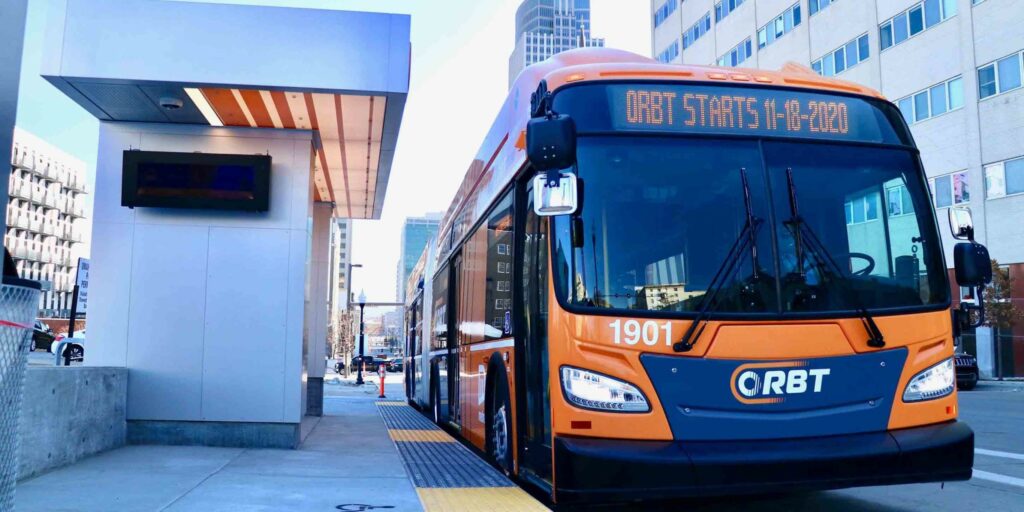
Bus Rapid Transit (BRT) is undoubtedly the ‘in favor’ transit technology in Denver and other U.S. cities these days and can be founds operating in locations such as Boston, Los Angeles, San Francisco, Albuquerque, Cleveland, Eugene, Kansas City, Omaha and Richmond. The idea is to provide some of the amenities which make light rail quicker and easier to use, but with buses on existing streets resulting in a transit solution that is cheaper to implement.
BRT Stations
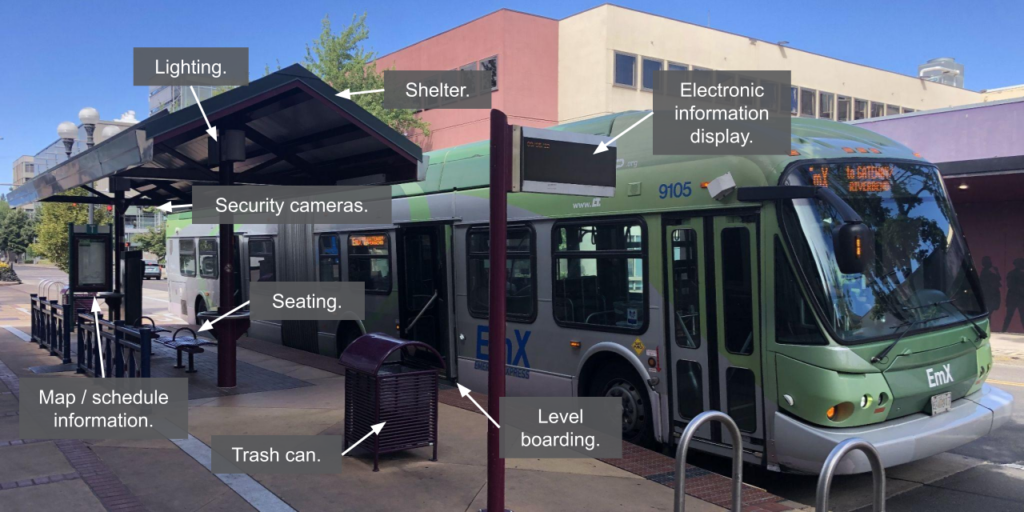
To maximize ridership, BRT stations should offer a similar experience to light rail stations. Platforms are typically 12-14 inches above the road surface.
BRT Buses
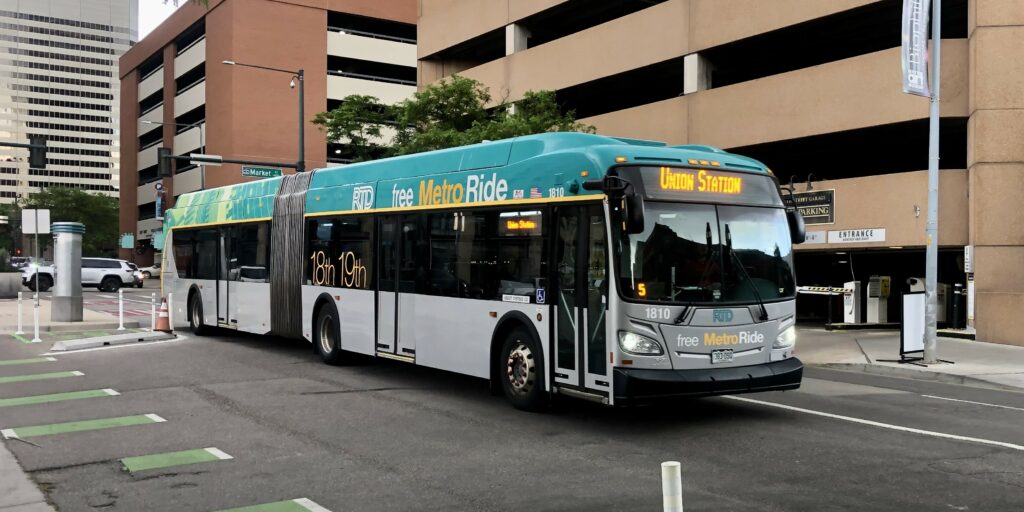
Right now there is pretty much only one bus available to transit agencies in the U.S. looking to add hi-capacity BRT which is the New Flyer XD60 (diesel powered) or the XE60 (battery powered). The New Flyer vehicles are 60ft long with an articulated section in the middle. They have three sets of double doors for quick boarding and are similar to the Free MetroRide vehicles that operated downtown.
BRT Electrification
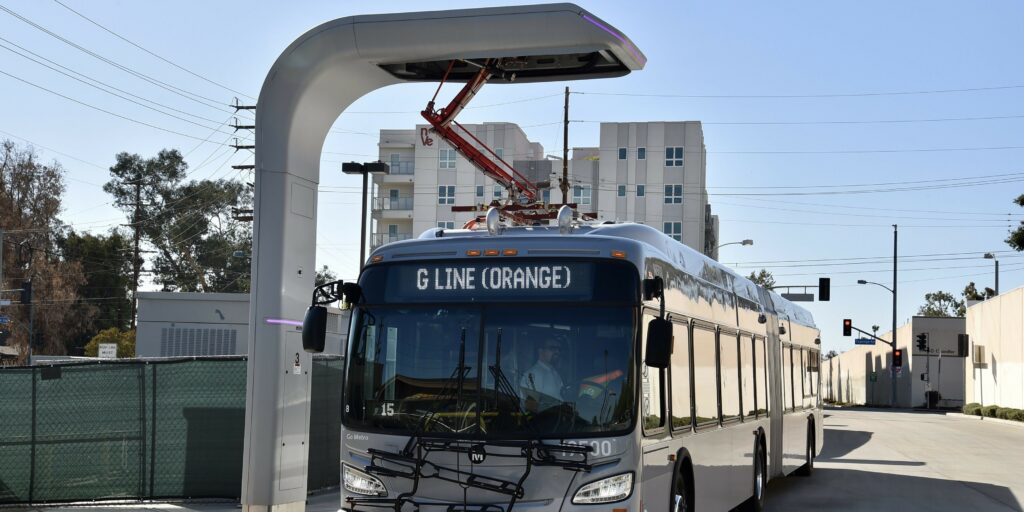
BRT routes are great candidates for electrification, either with Trolleybus technology or end-of-line charging stations which allow battery electric buses to top up for a few minutes while they layover at one or both ends of the route. Unlike rail vehicles where the pantograph is carried on the vehicle itself and is raised towards an overhead line, end-of-line charging stations feature a static pantograph which is lowered on to a contact point located on the roof of the bus. End-of-line charging technology has now been deployed reliably around the world and is widely viewed as a credible option for bus electrification.
Level Boarding
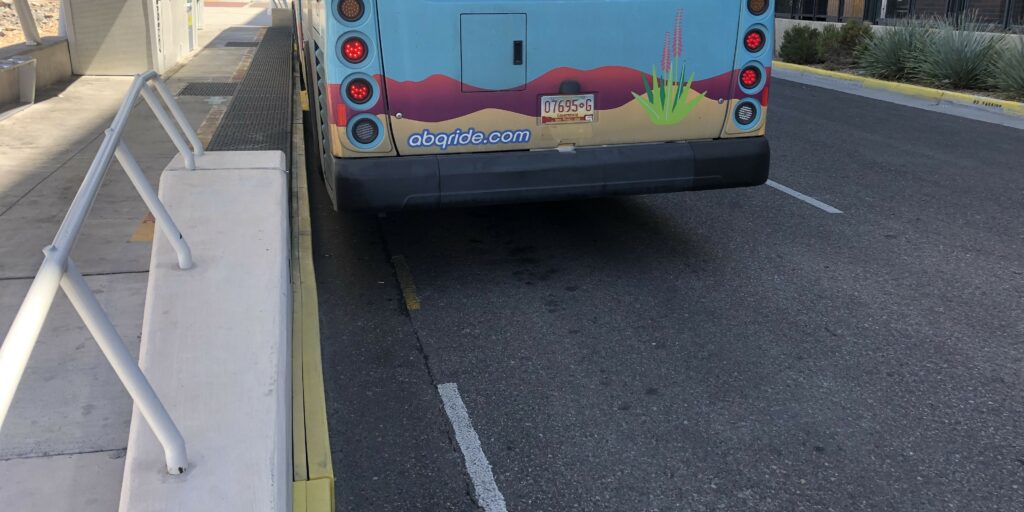
One of the major advantages of BRT is that it can offer level boarding at all doors. BRT stations are fitted with a rubber curb (painted yellow in this example) to allow the wheels to be bumped up against and thus minimize the gap between the vehicle and platform.
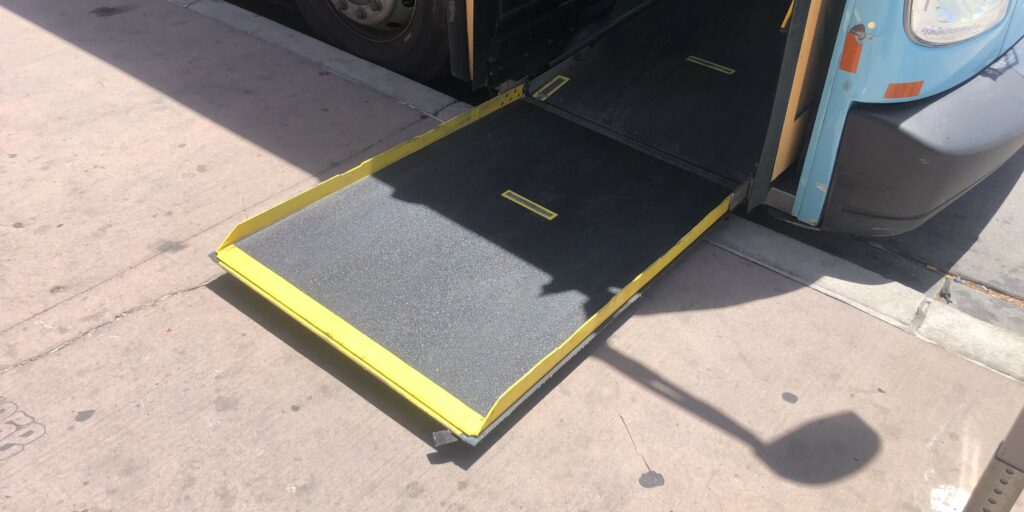
A regular ADA ramp provided at front door and the bus has the same ability to “kneel” to service routes without dedicated BRT stations.
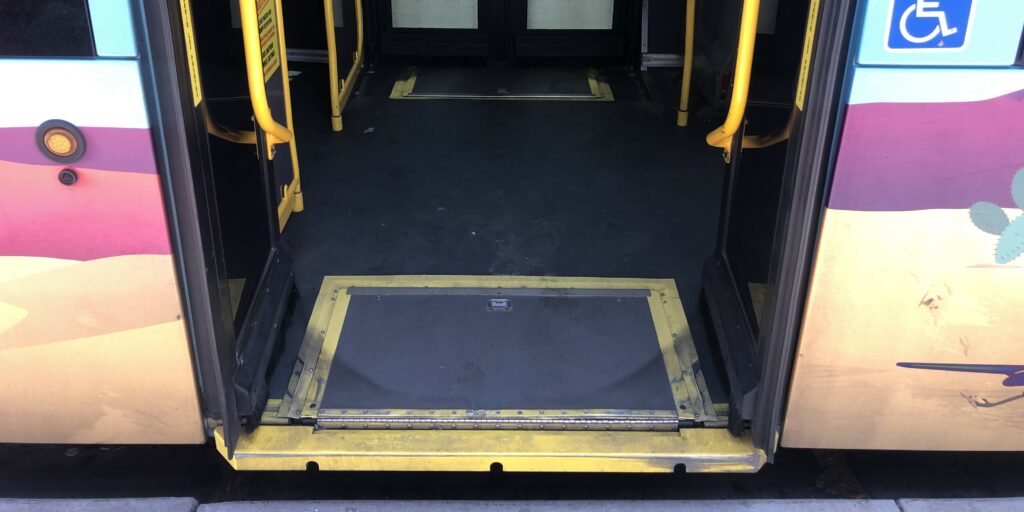
To further bridge the gap between vehicle and platform, the buses are fitted with step extensions. Note the doors on both sides of the bus in this example.
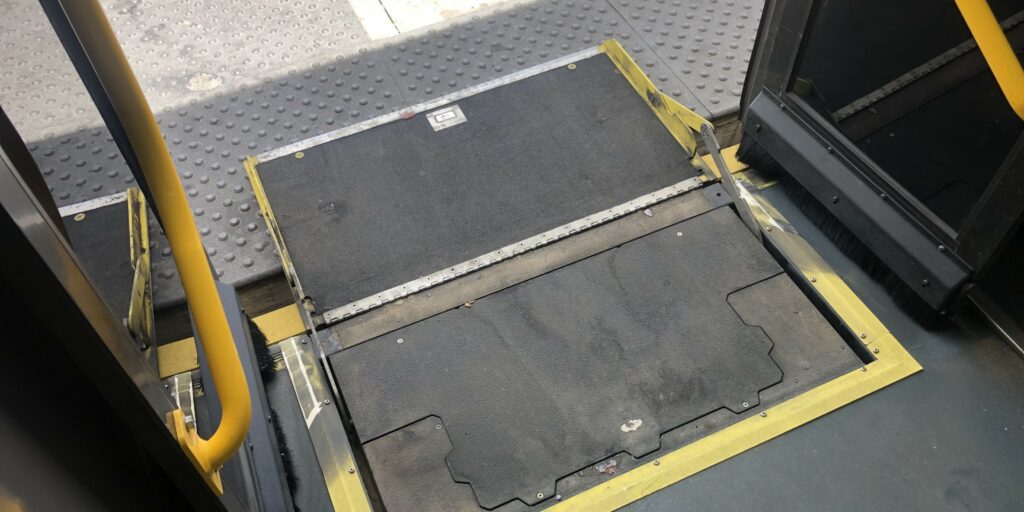
On the middle and rear doors, folding ramps are provided which can be remotely activated by the operator, should there be an passenger present using a wheeled device.
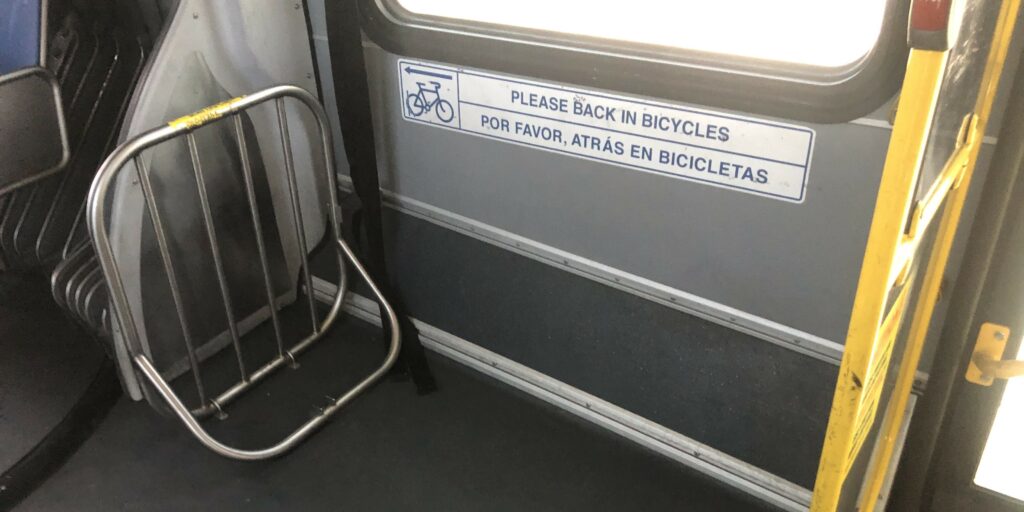
Because the height of BRT platforms poses a safety hazard to anyone using the front bike rack, storage for bikes will be provided inside the buses, usually just forward of the rear doors.
“BRT Mode”
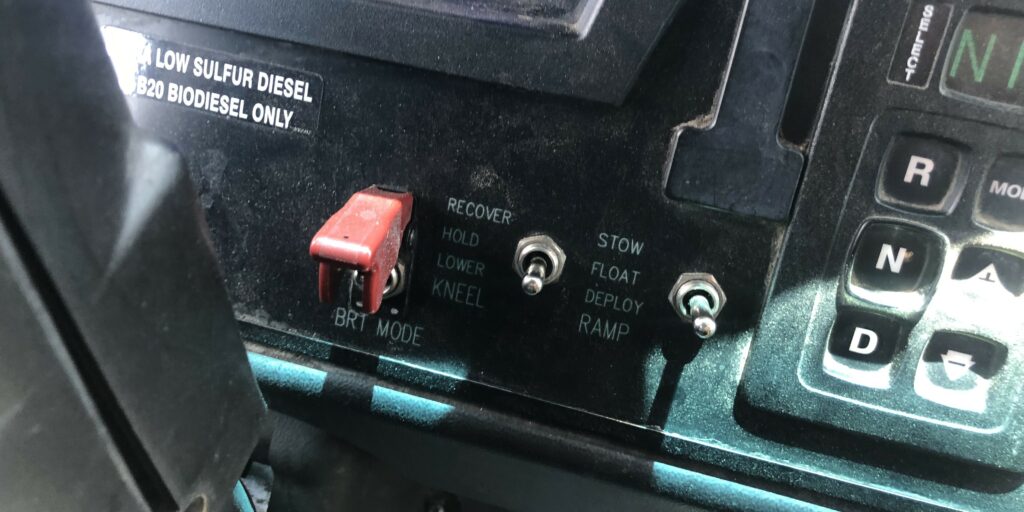
BRT buses are fitted with a “BRT mode” which raises the suspension to match the ride height with the platforms to allow level boarding on all doors. The “BRT mode”, when selected, is activated by turning the regular bus flashers on when the bus is approaching a station. To avoid potential damage to the raised suspension, it also governs maximum speed (e.g. 35mph).
Transit Signal Priority
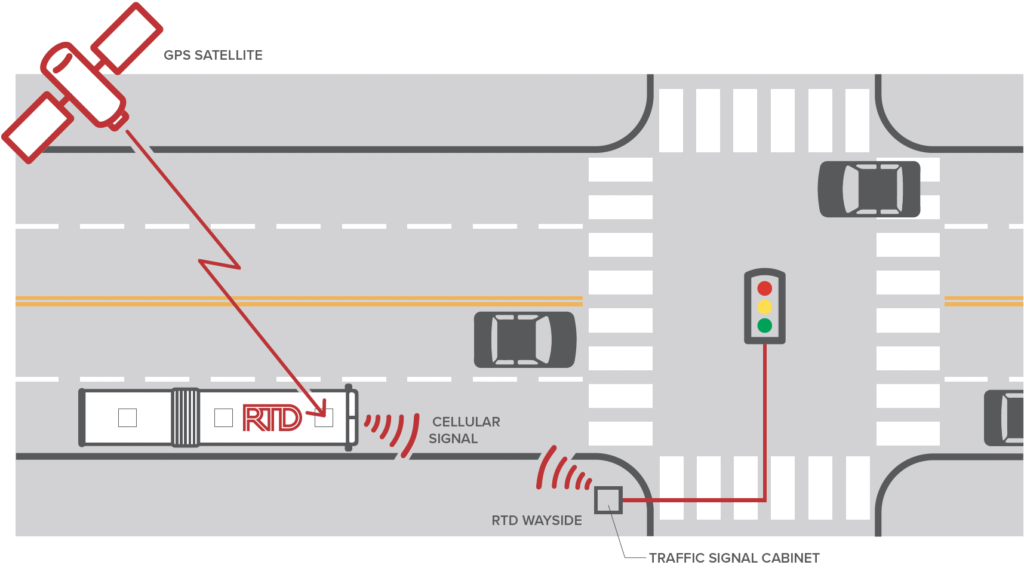
Transit signal priority (TSP) is a smart trick whereby buses can communicate their presence to traffic signals, which then turn green for the bus. This results in less waiting at red lights speeds up journey times.
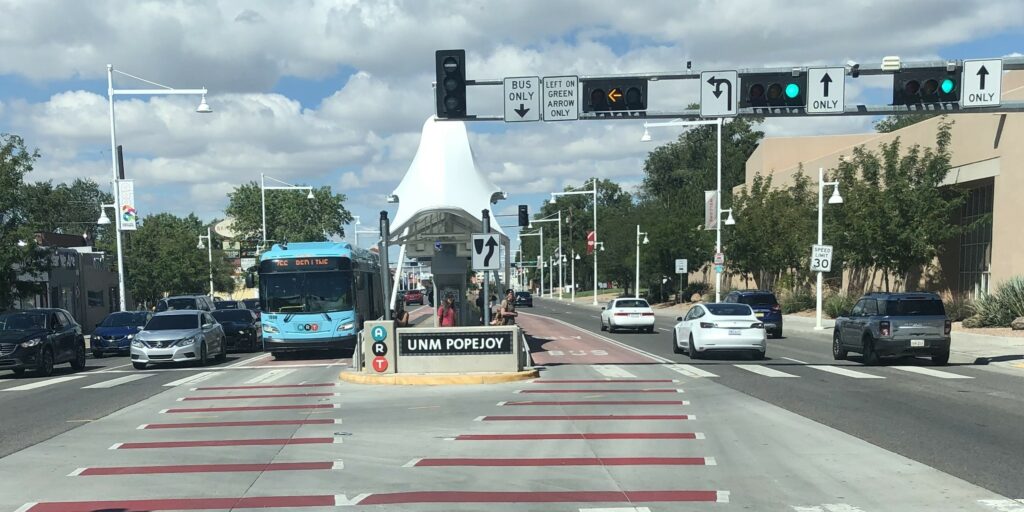
In this example the BRT buses have light rail style transit signal, (the horizontal white line) which is just about to change to “go” (vertical white line) after the left turn signal located immediately to the right cycles to a red arrow indication.
Side-Running BRT
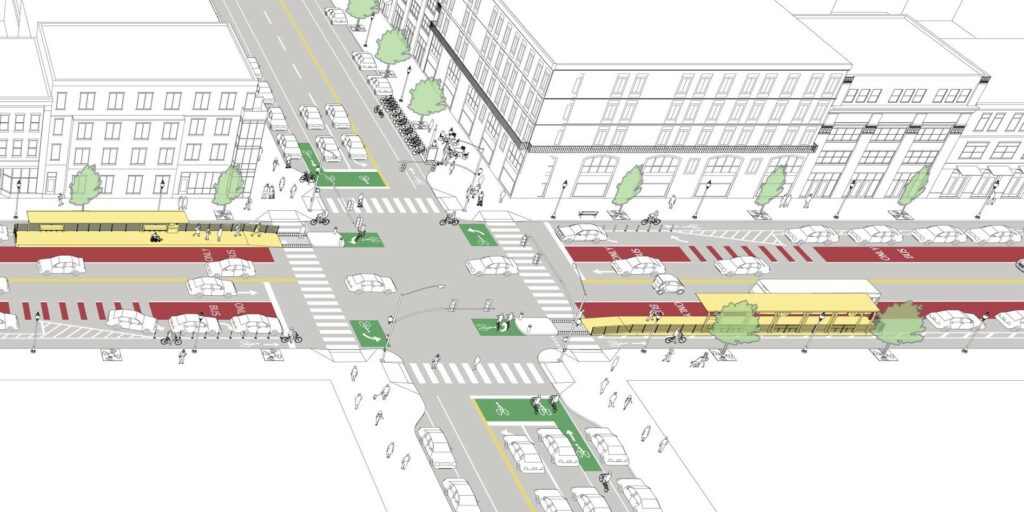
Side-running BRT locates the bus lanes curbside, effectively as “bolt-ons” to the roadway. It is is the most prevalent BRT configuration in the United States due to its cost and simplicity as existing bus stops can be incrementally upgraded in place. The drawback is that the bus lanes conflict with other curbside facilities such as bike lanes, loading spots, parking spots and right turn lanes. In addition, 50% of riders have to use long crosswalks spanning multiple vehicle and bus lanes to access the stations. Finally, all all vehicle turns come into conflict with bus and bicycle movements.
Because of the limitations above, side-running bus infrastructure is best saved for lower-demand, less-congested roads (not arterials).
Center-Running BRT
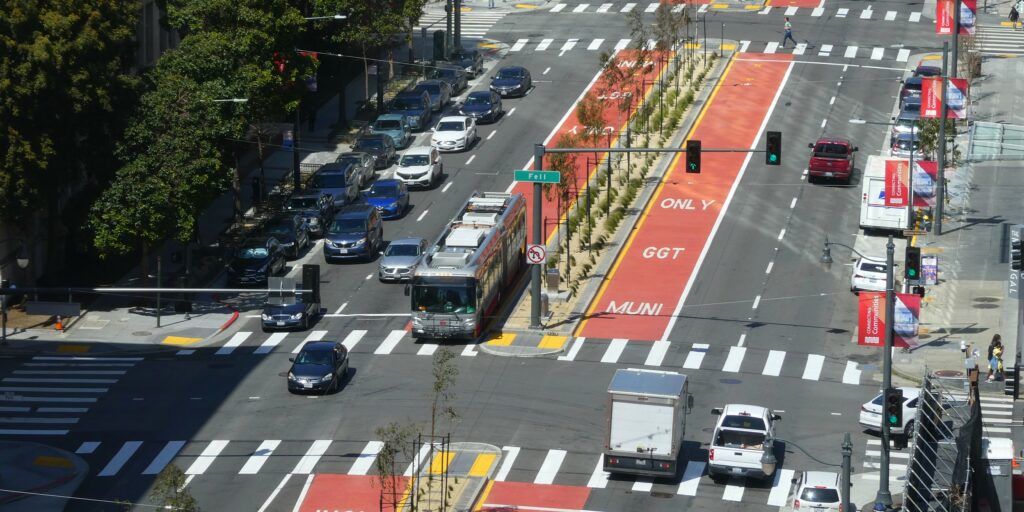
Center-Running BRT places the bus lanes in the middle of the street and constructs the station platforms as islands. The main advantage of center running BRT is it places the transit in a hugely prominent position at the center of the street and frees up the curb space for bike lanes, loading, parking and right turn lanes. It also means that buses do not conflict with any right turns, only the left ones. The down sides are that all riders have to cross traffic lanes to access the BRT system and accommodating left hand vehicle turns is somewhat tricky, requiring either dedicated traffic signal phases or being prohibited.
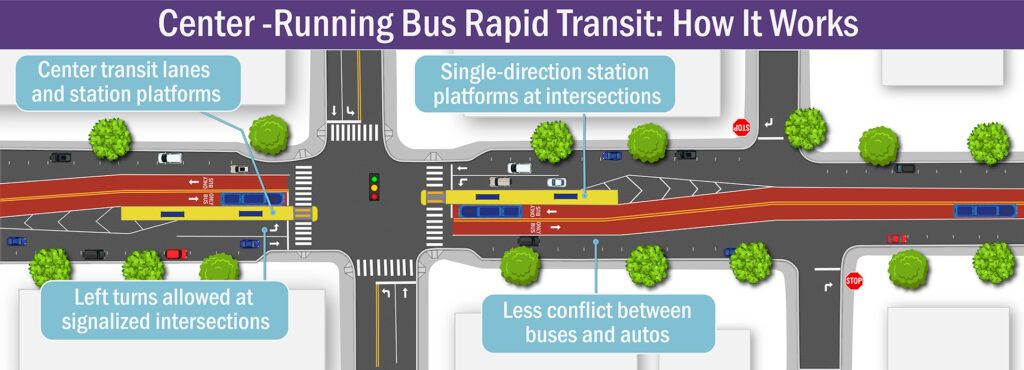
Because it reduces conflicts between buses, vehicles and bicycles, Center-Running BRT is preferable to Side-Running BRT.
Side Transitway
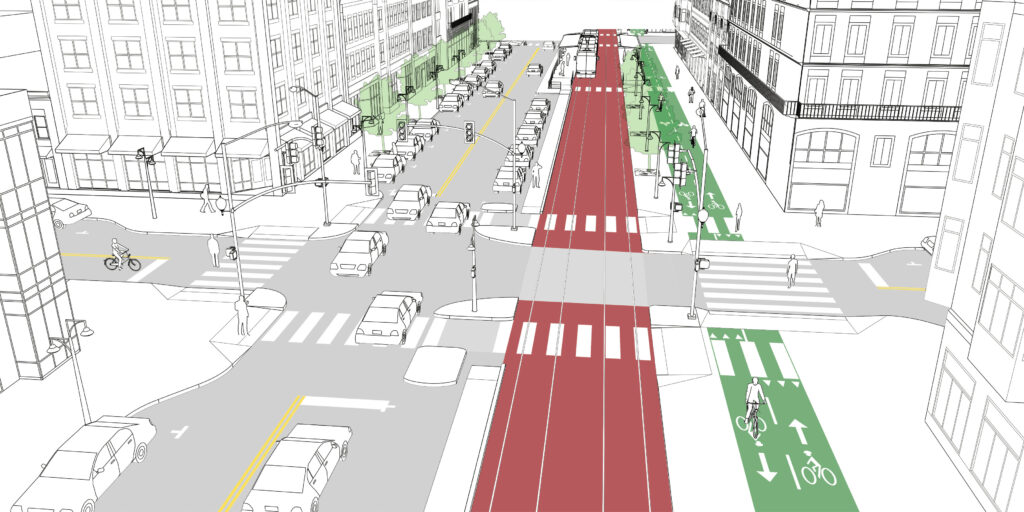
Because it reduces conflicts between buses, vehicles and bicycles, Side Transitway BRT offers significant safety and operational benefits, the main being that only Only 50% of pedestrians need to cross the street to access transit and that distance is reduced. It provides a dedicated right-of-way for transit which maximizes speed and capacity. A fringe benefit is that a 2-way cycle track can be provided, which is shielded from the road traffic by the transitway. That said, both right & left turns across the transitway would have to be tightly controlled.
Denver’s BRT Plans
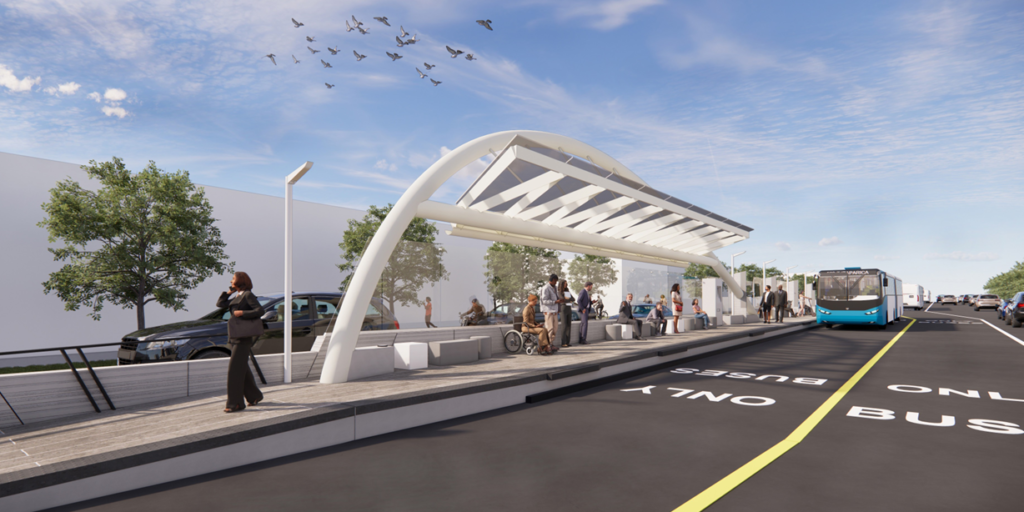
Denver currently has ambitious plans to build BRT lines and the first one, the Colfax BRT, has broken ground and is scheduled to open in January 2027. Schemes on Federal and Colorado Boulevards are being advanced by the Colorado Department of Transpiration (CDOT), while others on Speer Boulevard and 38th Avenue are currently being studied by Denver’s Department of Transportation and Infrastructure (DOTI). Finally the Highway 119 BRT project between Boulder and Longmont is also under construction and scheduled to begin operation in 2027.
In summary…
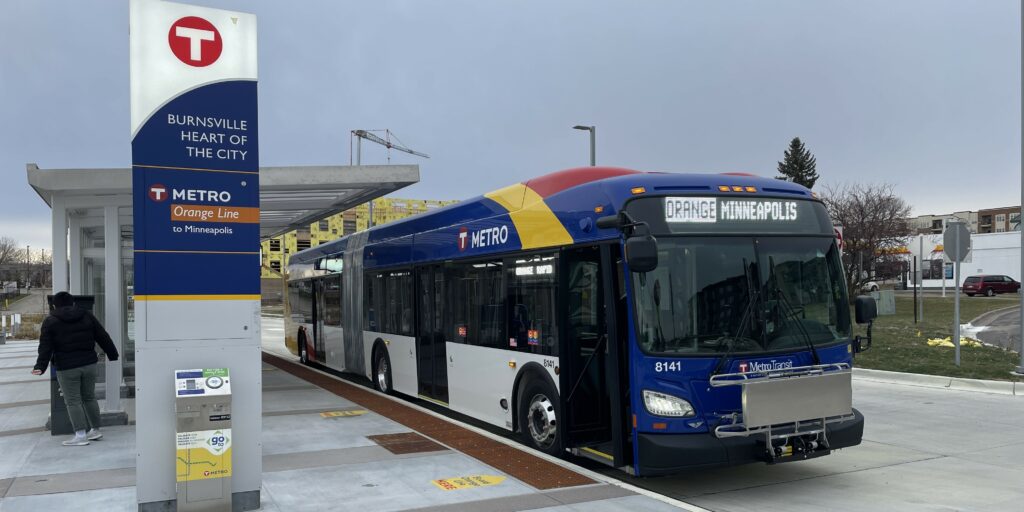
BRT brings an appropriate transit upgrade up to a certain level of ridership and when deployed appropriately can provide a valuable and cost-effective transit solution. That said, it should not been seen as the “be all and end all” of fast, frequent, reliable and accessible transit. More so, it should be considered as one particular mode in a selection that includes regular buses, streetcars, light rail, subways and regional rail.
Our View…
Bus Rapid Transit (BRT) is one particular transit mode out of a number available.
– BRT must as minimum feature dedicated lanes, transit signal priority, level boarding and off-board fare collection.
– GDT prefers side transitway BRT, then center-running BRT over side-running BRT due to less conflicts with turning vehicles.
– Look out for BRT projects being proposed as an inappropriate option because cost of rail is ‘prohibitive’.
– Look out for BRT projects being ‘watered down’ – BRT Creep.
– Show your support for the good BRT schemes!